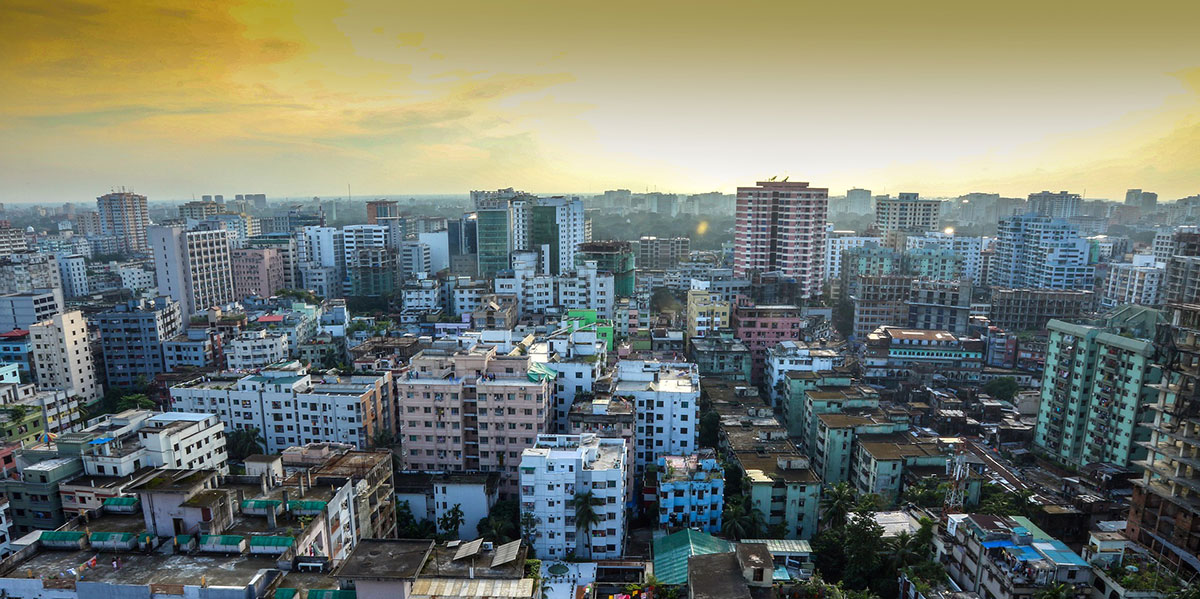
Environmental Security, Cities, and International Order
janvier 24, 2020 — The Big Picture
Climate-fueled natural disasters, whether flooding from extreme rainfall, prolonged drought, monster storms, or suffocating heatwaves, impact the world’s cities and the international system alike. Climate’s impacts upon cities and the international system are closely interwoven and any serious conversation about urban climate resilience should include its international and transboundary dimensions.
Environmental security provides a frame for understanding how climate change will affect societies, including cities, and the international system. The field, dating to the 1970s, long has linked the degradation of nature to international disorder. A degraded nature disrupts human systems—agriculture, managed forests, fisheries, cities—creating greater scarcities while causing more frequent and serious natural disasters. Rising scarcity and greater turbulence make societies more fragile, causing mass migration, resource-based conflict, reduced governmental legitimacy, and more. Increased fragility spills across national boundaries, in the form of refugees and conflict. Ultimately, these stresses create international disorder, undermining solutions to diplomatic and governance problems that are already challenging.
Although it is much debated, Syria’s civil war is among the most famous environmental security cases. In 2006-2007, a severe drought struck the Middle East and Levant, forcing mass internal displacement within Syria (rural farmers migrated to cities), weakening an already fractured society as new migrants struggled to adapt in Syria’s cities. Those conditions contributed to the powder keg that became first the Arab Spring and eventually the Syrian civil war.[1]
Critics have argued that the evidence does not support this climate-centric hypothesis for Syria.[2] They have a point: as natural disasters have occurred throughout human history, one could claim that anthropogenic climate change has not been the primary cause of any specific disaster. But this argument is becoming far more untenable in the face of ongoing carbon loading of the atmosphere and oceans, ever-rising global temperatures, and the ever-firmer scientific consensus pointing exactly in the climate-disaster direction.[3]
The Syrian case, in other words, portends the future. And if Syria offers any guidance as to how humankind will respond in the face of climate disaster, that future appears grim. Syria’s civil war drove millions abroad, including to Europe, where they faced a largely unwelcome and often hostile reception.
To put these pieces together, one might imagine what could occur if in the future an extreme climate-driven natural disaster struck somewhere in the global south. Suppose, for example, that an unusually savage disaster—perhaps extraordinarily heavy rainfall combined with a beyond-category cyclone—befell South Asia, with strongest impacts centered on Bangladesh, northeastern India, and western Myanmar.
Although this region has a long and difficult history with flooding and storms, suppose that this particular disaster event extended well beyond all previous experience, in the process creating climate refugees by the millions. Although Dhaka might be able to absorb additional internal migrants (meaning Bangladeshis), as it has been doing year-on-year for decades, at some point Dhaka’s status as one of the most vulnerable cities in the world will begin to catch up to it. It is unknown whether Dhaka can continue to absorb, if imperfectly, climate refugees from Bangladesh’s coastal areas indefinitely, as Bangladesh’s territory shrinks while its population grows.
Yet even if Dhaka were able to absorb and manage the influx of climate refugees from within Bangladesh, a questionable outcome in this scenario, the region’s nation-states almost certainly would not tolerate large-scale transboundary climate refugee movement that would also follow. Tensions in South Asia over transboundary migration are already high. The 2016 Rohingya refugee crisis drove nearly a million desperate people from Myanmar into Bangladesh; the national government has refused to assimilate them.[4] India’s northeastern states, as well, are now undergoing fraught battles over citizenship, with Bangladeshi migrants caught in an identity politics maelstrom that threatens their deportation.[5]
« Addressing climate migration adequately will require extensive coordination and negotiation across governance verticals. »
These divergences between local and national conditions suggest that the climate migration problem cannot be addressed by cities and their governments acting alone. Indeed, as politics in the United States and elsewhere is now showing, local governments often are at odds with their own national governments over migration and refugee settlement policies, especially when it comes to numbers of people in need of assimilation. As national governments are sovereign, they often have the upper hand in such disputes. Addressing climate migration adequately will require extensive coordination and negotiation across governance verticals.
1. See, e.g., Peter H. Gleick, “Water, drought, climate change, and conflict in Syria,” Weather, Climate, and Society 6 (2014), pp. 331-340.
2. See, e.g., Jan Selby et al., “Climate change and the Syrian civil war revisited,” Political Geography 60 (2017), pp. 232-244.
3. For a summary of scientific consensus on climate-driven disasters, see Riyanti Djalante, “Key assessments from the IPCC special report on global warming of 1.5 °C and the implications for the Sendai framework for disaster risk reduction,” Progress in Disaster Science 1 (May 2019).
4. Mayesha Alam, “How the Rohingya crisis is affecting Bangladesh — and why it matters,” Washington Post (February 12, 2018), https://www.washingtonpost.com/news/monkey-cage/wp/2018/02/12/how-the-rohingya-crisis-is-affecting-bangladesh-and-why-it-matters/.
5. Niha Masih, “A crackdown in India on suspected illegal immigrants could leave millions stateless,” Washington Post (August 26, 2019), https://www.washingtonpost.com/world/asia_pacific/a-crackdown-in-india-on-suspected-illegal-immigration-could-leave-millions-stateless/2019/08/26/4f46b3a0-b471-11e9-8e94-71a35969e4d8_story.html.